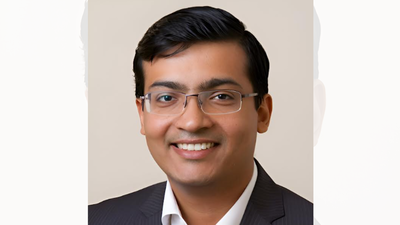ARTICLE AD BOX

Shantanu Agarwal, founder of Mati Carbon
It sounds almost fantastical — spreading a widely available rock onto agricultural soil to remove carbon from the air while increasing yields for farmers. US-based Shantanu Agarwal, founder of Mati Carbon, says it’s not just possible, it’s happening on Indian farms. The IIT grad, who made it to this year’s Time100 Next list and won the $50m XPRIZE, speaks to Ketaki Desai on why his solution could be a game-changer
I believe the idea for using mati (soil) to capture carbon came from a visit to India. Can you tell us about that?
After working in oil and gas, and then a climate-centric venture capital fund, I was looking to create an impact as the climate emergency was only growing. I started a direct air capture (DAC) company, which removes carbon from air and sequesters it into earth’s crust.
While the technology is interesting, it is also very energy-intensive, making scaling up challenging. At the same time, I was visiting small-holder farmers in Chhattisgarh as part of a nonprofit I had donated to. I realised that a lot of them were getting lower and lower productivity because of degrading soil. I did some back-of-the-envelope calculations, took some samples of rock and soil to figure out if there was viability in doing enhanced rock weathering.
When I did the testing with our partners at Yale University, the results came positive. I went full-time into this as I felt this could be a massive win for climate and, at the same time, solve millions of farmers’ adaptation challenges.
For a layperson, how would you explain enhanced rock weathering?
It’s actually nature’s own carbon capture system. Rock weathering is how all soil is formed — over millions of years, rocks break down through reactions with rainwater and carbon dioxide in the air.
Think of fizzy water. If you wash your toilet bowl with it, all that white scale, which is calcium carbonate, gets dissolved and cleaned with the acid water. The CO2 and water in the fizzy drink makes a dilute acid called carbonic acid, which reacts with calcium carbonate and the bowl gets cleaned.
Now, this is happening in nature at a massive scale because there is CO2 in the air, and water in rain, which is dissolving rocks into finer and finer powder over millions of years.
Today, more than 200 million tons of carbon are removed by the planet itself due to rock weathering.At Mati, we enhance this process by predominantly using basalts. Basalt is a silicate rock, which India is blessed to have a large amount of, because the whole Deccan Plateau is essentially a silicate rock formation. When you take these rocks, powder them and put them in agricultural fields, the nutrients get released and rejuvenate degraded soil.
As many as 65% of farmers in the first season itself reported that they didn’t need pesticides anymore.
Less than a fraction of 1% of the rocks in the Deccan Plateau can remove all the human-generated CO2.
So, Mati’s approach doesn’t just cut emissions — it actively removes carbon?
Emission reduction is a very important piece of the overall picture, but carbon removal is also very important. If we want to be a net zero species by 2050, which is what the target is, there is going to be a need for 5 to 10 billion tonnes of carbon removal per annum.
If we were doing amazingly on emission reduction, then we could maybe argue that carbon removal doesn’t need as much attention. The later we do emission reduction, the more carbon removal we need.
Both need to happen at a massive scale.
How challenging was it to convince farmers to try this?
We work with about 25,000 farmers today. If you tell them that you’re going to give them something for free and it will improve your productivity, they will ask, what’s in it for you? You have to show it to them that this actually works. We typically try to first convince existing trust networks in thatarea, which could be an NGO or farmer organisation, and then we explain to farmers.
In the first season, 4-5 people try it out. By season three, everybody wants it. Right now, in India, we are rationing it because we are so oversubscribed.
You opted not to take venture capital funds for this. Why was that?
I had a choice: to take VC funding or do without it. But I knew that if we took VC funding, then our mission would become making returns for the venture capitalists, and it would not be about the farmer anymore. So, I decided to raise philanthropic money. The farmers we are dealing with are very poor farmers, so we are not charging them anything.
We sell carbon credits to clients in the Global North to fund this.
There is an inequity here — while the global north contributes the most to climate change, the global south often bears the impact. So, your model flips that equation?
That is the beauty of this solution. We are getting the global north to pay for climate adaptation for small-holder farmers in the global south. The largest and most profitable companies in the global north buy these carbon credits, which allows us to fund the smallest and most climate vulnerable people so that they’re able to pay off debts, improve seed quality, soil quality, and increase income.
How did the XPRIZE change your plans?
Our ambition was to expand slowly, but the prize has allowed us to truly try to make this a planetary-scale solution. This year alone, we will increase farmer income by about $4.5m. The goal is to support 100m farmers by 2050.

 7 hours ago
4
7 hours ago
4









 English (US) ·
English (US) ·